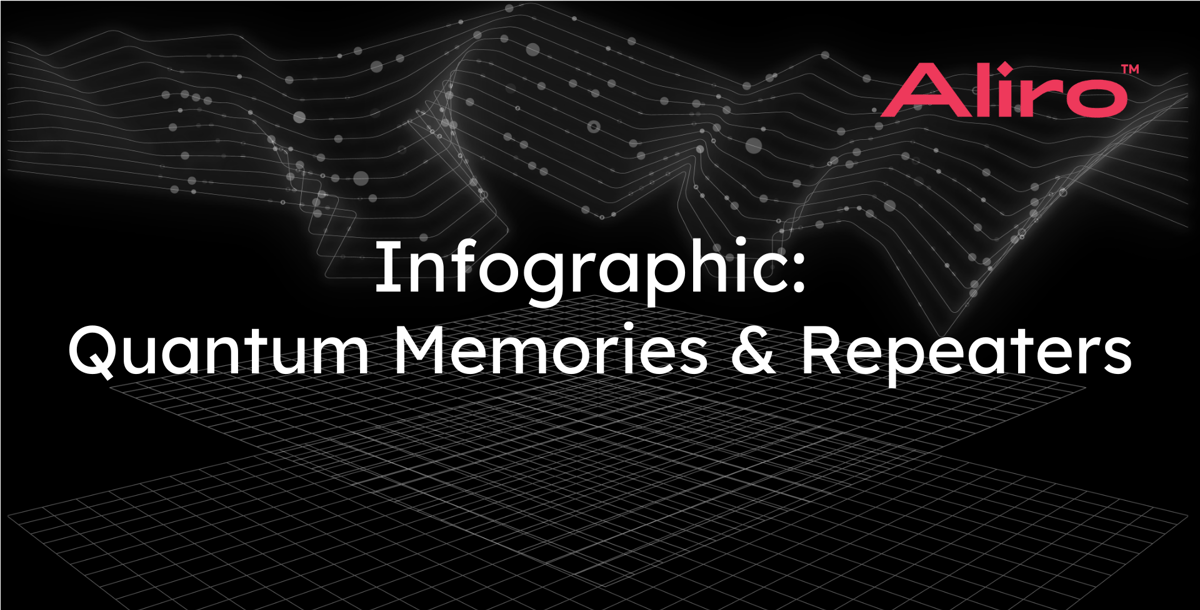
Entanglement-based quantum networks are being deployed more and more around the globe. These entanglement-based networks are really the modern Advanced Secure Network. These networks are able to perform multipurpose tasks and support multiple applications.
Entanglement-based quantum networks communicate using qubits: communication is created using qubits, from end-to-end, point-to-point. Quantum networks create entangled pairs of qubits to establishing connections and communicate information. Qubits exist in superposition - they can be in multiple states at one time, making them a very unique type of data. They can also decohere, or degrade in quality and usefulness. This demands a unique implementation of specialized hardware, and specifically quantum memories. Quantum memories are critical to entanglement-based quantum networks because they enable the storage and processing of qubits within entangled systems.
Where are quantum memories used in entanglement-based networks? Modern entanglement-based networks use quantum memories in a variety of locations. For example, at the nodes at either end of the network or multiple points in the network. A node would use quantum memories for storing and manipulating qubits. At endpoints and different nodes within the network, the sharing of quantum keys or secrets is facilitated using quantum memories. Quantum memories are used in supporting Quantum Secure Communication protocols throughout the network, as well as a wide range of quantum applications, for example in distribution of quantum sensing.
Quantum memories are also critical to the development of entanglement-based repeaters. Entanglement-based repeaters are not a monolithic device today, and instead are made up of several discrete components that are brought together to perform the tasks of a repeater.
These components include:
- An entanglement source, which generates the entangled particles or photons that are then distributed to the connected points. Those connected points may be on either side of the repeater, they may be other repeaters, or they may be other end points or nodes.
- Photon sources and detectors. These generate and receive photons on either side of the system, within the system, within the repeater.
- Quantum memories, which enable the repeater to store qubits with higher fidelity, and better synchronization and timing of the incoming photons that can then be buffered within the memories.
- Bell State measurement, which measures and characterizes the entanglement between two particles or two photons. This is critical for entanglement and entanglement swapping.
How do these entanglement-based repeaters operate with these quantum memories? Internal operation is key, and there's more than hardware that is required to implement a quantum repeater. There is a significant amount of software and communication needed to enable quantum repeaters to operate as an actual repeater capable of storage, entanglement, and entanglement swapping. Configuration communications and protocols are implemented via software within these devices. North-South communication occurs between the repeater and the systems controller and network orchestrator. East-West communication occurs with other repeaters in the system, other memories in the system, and even other endpoints in the system.
Within the repeater itself, operations such as entanglement are occurring and this is facilitated using both the hardware and software. There are a multitude of parameters to set and reset, adjust, read, monitor and control in these systems. This typically occurs at the software level, working with the hardware devices. Timing is critical in terms of ensuring that entanglement occurs, that decoherence is limited, and the operation of the system between memories and beam splitters occurs seamlessly. Real time configuration and real time monitoring maintain the system and keep the quality of qubits high.
Today, point-to-point connections are being created, and clustered endpoints being supported. Soon we'll be able to implement entanglement-based repeaters and extend distances from node to node, leading to repeater chains and networked entanglement-based systems where entanglement-based repeaters and routers are used to interconnect different locations and different sites. Ultimately, this interconnection leads to a Quantum Internet which will span not just regions, but even larger geographies. This Quantum Internet will become the premium secure infrastructure where individuals, organizations, and agencies who absolutely require a system that protects from harvest-now-decrypt-later attacks and other forms of hacking will move the security dimension of their classical network to this Quantum Internet.
Today, there are a wide range of entanglement networks being developed. A number of them are online already. The next steps in quantum memory development will lead to entanglement-based repeaters, and these entanglement network locations will be interconnected with one another, similar to how the classical Internet grew from disparate regional networks to the global Internet.
Click here watch our on-demand webinar "Using Quantum Memories in Entanglement-based Networks.
Quantum memories are an integral part of entanglement networks, enabling the secure, efficient, and long-distance transmission of quantum information in a variety of applications. This webinar provides an exploration of quantum memories, their applications, and practical aspects of integrating them into entanglement-based network architectures.
You’ll learn:
- What a quantum memory is and what it does
- The different types of quantum memories, and which are best suited for use in entanglement-based networks
- Applications enabled by quantum memories - and their role in an entanglement-based network
- The future of quantum memory development and their use in entanglement-based networks
